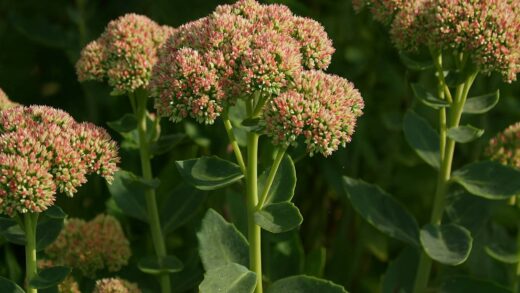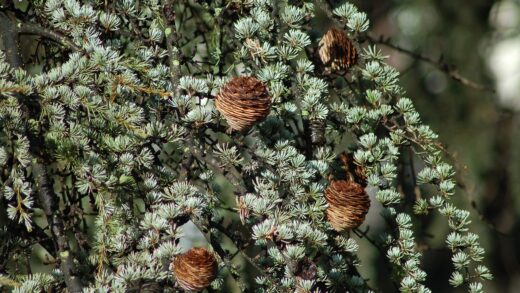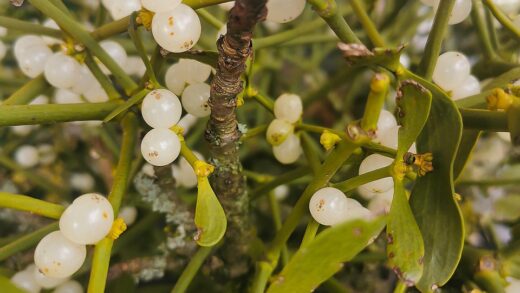Successfully establishing Darwin’s barberry in the garden begins with a thoughtful and well-executed planting process, which lays the foundation for a healthy and vigorous life. The ideal time for planting is crucial, with autumn being the preferred season in many climates, as the warm soil encourages root development before the onset of winter, giving the plant a head start for the following spring. Alternatively, early spring, after the last frost has passed, is also a suitable window, allowing the plant to establish itself before the heat of summer arrives. Careful preparation of the planting site and proper handling of the plant during this process are paramount to minimize stress and ensure a smooth transition into its new environment.
Before the shrub even goes into the ground, selecting a healthy specimen from the nursery is the first step toward success. Look for a plant with a well-developed root system, evident by roots visible through the drainage holes but not excessively circling the pot. The foliage should be a vibrant, deep green with no signs of pests, diseases, or physical damage. Choosing a strong, healthy plant from the outset provides the best possible chance for it to thrive and quickly become a beautiful feature in your garden landscape. This initial investment in quality is one of the most important you can make.
The process of planting itself requires attention to detail. Once the hole is prepared, carefully remove the plant from its container, teasing out any circling roots to encourage them to grow outwards into the new soil. Place the plant in the center of the hole, ensuring that the top of the root ball is level with the surrounding ground. Planting too deep can lead to stem rot, while planting too high can cause the roots to dry out. This correct positioning is a simple yet critical detail for the plant’s long-term health.
After positioning the plant, backfill the hole with the amended native soil, gently firming it around the root ball to eliminate any large air pockets. Once the hole is filled, create a shallow basin or “moat” of soil around the base of the plant to help direct water to the root zone. Water the newly planted shrub thoroughly to settle the soil and provide essential moisture to the roots. This initial, deep watering is vital for establishing good contact between the roots and the soil, which is necessary for water and nutrient uptake.
Selecting the ideal planting location
The long-term success of Darwin’s barberry is heavily dependent on choosing the right spot in your garden. This shrub is quite adaptable but flourishes best under specific conditions that mimic its native Andean foothills habitat. An ideal location offers a balance of sunlight and shade; full sun is tolerated and often promotes the most prolific flowering, but in regions with very hot summers, a site with partial shade, particularly protection from intense afternoon sun, is preferable. This prevents the leaves from scorching and reduces overall stress on the plant, contributing to more robust health.
More articles on this topic
Consider the soil characteristics of the potential planting site with great care. Darwin’s barberry insists on well-drained soil and will not perform well in heavy, waterlogged conditions, which can quickly lead to root rot. To assess drainage, you can dig a test hole and fill it with water; if it takes more than a few hours to drain, the soil is likely too heavy and will need significant amendment. Improving drainage can be achieved by incorporating generous amounts of organic matter like compost, as well as grit or coarse sand, to create a more friable and permeable soil structure.
Air circulation is another important factor to consider when siting your plant. Good airflow around the shrub helps to keep the foliage dry, which is one of the most effective ways to prevent the development of common fungal diseases such as powdery mildew or rust. Avoid planting it in overly crowded beds or in stagnant corners of the garden where air movement is restricted. Allowing adequate space between the barberry and other plants not only promotes health but also allows the shrub to develop its natural, graceful form without competition.
Finally, think about the functional role of the plant in your garden design. Its dense, spiny nature makes it an excellent choice for creating a security hedge or a barrier to direct foot traffic or deter animals. When used as a hedge, ensure the location allows for its mature spread so that it can form a continuous screen without becoming overgrown or difficult to manage. If planting as a specimen, choose a location where its year-round beauty—from the vibrant spring flowers to the autumnal berries and evergreen foliage—can be fully appreciated from a window or patio.
Step-by-step planting guide
The actual process of getting your Darwin’s barberry into the ground should be done with care to minimize transplant shock. Begin by digging a hole that is approximately twice the width of the plant’s container and just as deep. This ensures the soil around the new root ball is loose, making it easier for the roots to penetrate and expand into their new home. Place the excavated soil onto a tarp or into a wheelbarrow, where you can easily mix in amendments like compost or well-rotted manure to improve its fertility and structure.
More articles on this topic
Once the hole is prepared, it is time to handle the plant itself. Gently tip the container on its side and slide the plant out, supporting the base of the stem. If the plant is stuck, you can tap the sides and bottom of the pot to loosen it; avoid pulling on the stem, as this can cause damage. Inspect the root ball and if the roots are tightly coiled or circling, carefully tease them apart with your fingers or make a few shallow vertical cuts with a clean knife. This crucial step encourages the roots to grow outwards rather than continuing to grow in a constricted pattern.
Position the plant in the center of the hole, checking its depth carefully. The point where the stem meets the roots should be exactly level with the surrounding soil surface. Use a straight edge like a shovel handle or a piece of wood placed across the hole to accurately gauge the correct height. Backfill the hole with the amended soil, working it in and around the root ball. Gently firm the soil as you go to remove any large air pockets, which can dry out roots, but avoid compacting it too tightly.
The final step in the planting process is a thorough watering. Water the plant deeply immediately after planting to settle the soil completely and provide the roots with much-needed moisture. This initial watering is the most important one it will receive. Applying a layer of organic mulch, such as bark chips or compost, around the base of the plant will help conserve this moisture, suppress weeds, and regulate soil temperature. Keep the mulch a few centimeters away from the stem to prevent any risk of rot.
Propagation through semi-hardwood cuttings
Propagating Darwin’s barberry from semi-hardwood cuttings is a reliable and rewarding method for creating new plants. The best time to take these cuttings is from late summer to early autumn, when the current season’s growth has started to mature and firm up. The wood should be firm enough to resist bending easily but not yet fully woody and brown. Select healthy, vigorous, and disease-free shoots from the parent plant for the highest chance of success. Using a sharp, sterilized pair of secateurs or a knife is essential to make clean cuts and prevent the introduction of disease.
To prepare the cuttings, select shoots that are about ten to fifteen centimeters long. Make a clean cut just below a leaf node, which is the point on the stem where a leaf emerges. Carefully remove the leaves from the lower half of the cutting to reduce water loss through transpiration and to prevent them from rotting when inserted into the rooting medium. You may also wish to lightly wound the base of the cutting by slicing a thin sliver of bark off one side, which can encourage root formation along the wound.
To further increase the likelihood of rooting, dip the base of each cutting into a rooting hormone powder or gel. This provides auxins, which are plant hormones that stimulate root development. Tap off any excess powder before inserting the cutting into the rooting medium. A suitable medium is a mix of equal parts peat moss or coir and perlite or sharp sand, which provides the right balance of moisture retention and aeration. Fill small pots or a seed tray with this mixture and moisten it thoroughly before inserting the cuttings.
Insert the prepared cuttings into the medium, burying them about one-third to one-half of their length. Firm the medium gently around each cutting to ensure good contact. To create a humid environment that encourages rooting, you can cover the pots with a plastic bag or place them in a propagator. Site the cuttings in a warm, bright location but out of direct sunlight, which can cause them to overheat and dry out. Keep the medium consistently moist but not waterlogged, and roots should begin to form within several weeks to a few months.
Propagation from seed
Growing Darwin’s barberry from seed is another viable propagation method, though it requires more patience than taking cuttings. The first step is to collect the ripe, deep blue berries in the autumn. The seeds are contained within the fleshy pulp of the berry, which contains germination inhibitors that must be removed. To do this, mash the berries and soak them in water for a day or two; the viable seeds will typically sink to the bottom while the pulp and non-viable seeds float to the top. Skim off the debris, rinse the seeds thoroughly, and allow them to dry.
The seeds of Darwin’s barberry have a dormancy mechanism that needs to be broken before they will germinate. This requires a period of cold, moist stratification, which mimics the natural winter conditions they would experience. To achieve this, mix the cleaned seeds with a small amount of damp sand or vermiculite and place the mixture in a sealed plastic bag. Store this bag in the refrigerator for a period of two to three months. This cold treatment signals to the seed that winter has passed and it is time to begin the germination process.
After the stratification period, the seeds are ready for sowing. Prepare a seed tray or small pots with a well-draining seed-starting mix. Sow the seeds on the surface of the mix and cover them lightly with a thin layer of compost or grit. Water the tray gently to moisten the medium without dislodging the seeds. Place the tray in a protected location, such as a cold frame or a cool greenhouse, where it will receive bright, indirect light. Maintaining a cool but not freezing temperature is ideal for germination.
Germination can be slow and erratic, so patience is key. It may take several weeks or even months for the first seedlings to appear. Once the seedlings have emerged and developed their first true leaves, they can be carefully pricked out and transplanted into individual pots to grow on. Continue to care for the young plants, protecting them from harsh weather, until they are large and strong enough to be planted out into their final positions in the garden. This process, from seed to garden-ready plant, can take a couple of years.
📷 Michael Wolf, CC BY-SA 3.0, via Wikimedia Commons


















